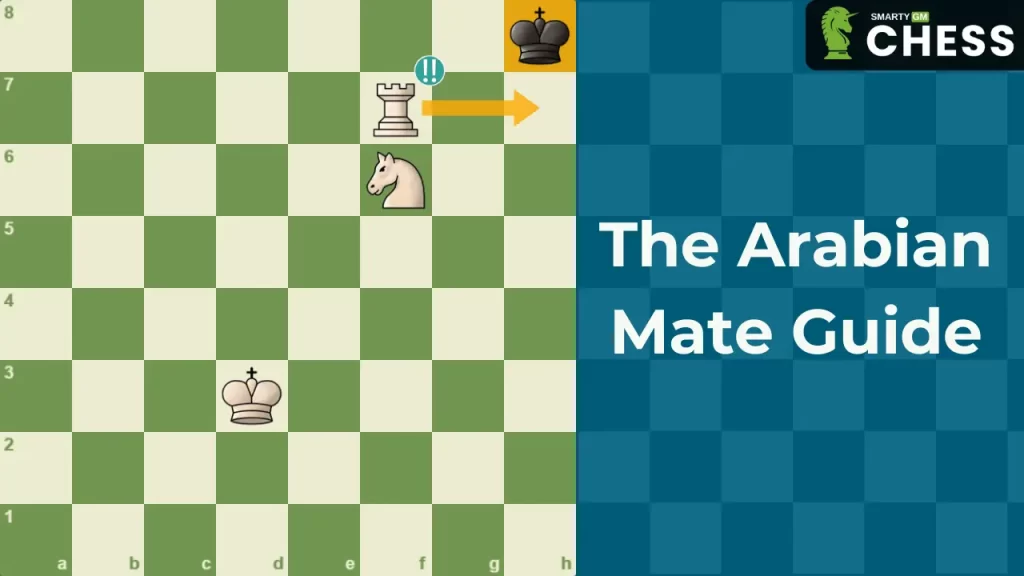The Arabian Mate is one of the oldest checkmate patterns in history, using the Rook and the Knight.
Today, I will explain the Arabian checkmate step by step with some patterns, examples, and tips to avoid stalemate.
Read also: Anastasia’s Mate: Definition and Tactical Patterns Guide
What is the Arabian Mate?
The Arabian Mate is a classic checkmate pattern that involves a Rook delivering the check while the knight controls escape squares, often utilizing the edge or corner of the board to trap the opponent king.
Understanding the Arabian Mate will enhance your tactical vision and endgame skills, allowing you to recognize and create winning opportunities.
How to set up the Arabian Mate?
Your first goal to set up the Arabian Mate is to drive your opponent King to the corner of the board by using your rook and knight to restrict his movement. Example:
In this position, you can deliver a checkmate in one move by playing Rook to h7 (You occupy g8 and g7 squares with your pieces).
Here in this example is already a mate in two after the move rook to a8 this gives black only two legal moves:
If he goes h7, than you play Rook to h8 checkmate:
And if he goes f7, then you play the easiest move Rook to f8 checkmate:
The Arabian Mate Patterns Examples
Here are some patterns examples of the Arabian Mate that you can learn from. Try to solve it before seeing the solution.
The Arabian Mate Patterns 1
This is an example of checkmate in three moves:
The Arabian Mate Patterns 2
The Arabian Mate Patterns 3
Common Mistakes to Avoid
Misplacing the Knight: Incorrect knight positioning can allow the opponent’s king to escape. Ensure your knight covers critical escape squares.
Premature Rook Moves: Moving the rook too early can give the opponent’s king room to maneuver. Be patient and coordinate with your knight.
Ignoring King Safety: While focusing on checkmating the opponent, don’t neglect the safety of your own king. Keep it protected from potential checks.
Overlooking Stalemate: Be cautious of stalemate traps where the opponent’s king has no legal moves but isn’t in check. Ensure the king always has a move until the final checkmate.
Conclusion
The Arabian Mate is a beautiful and effective checkmate pattern that showcases the power of piece coordination.
By understanding the roles of the rook and knight, and practicing their synergy, you can execute this classic checkmate with precision.
Remember to drive the opponent’s king to the edge, confine it with your pieces, and deliver the final
Frequently asked questions (FAQ)
The term “Arabian Mate” derives from the origins of chess in the Middle East, specifically during the Islamic Golden Age when chess was popularized and extensively studied.
To force an Arabian Mate, position your rook to check the enemy king on a file or rank while using your knight to control escape squares, near the board’s corner.



1 Comment
Pingback: Anastasia's Mate: Definition and Tactical Patterns Guide - Smarty Chess